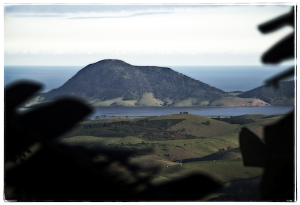It’s been raining in Espírito Santo. A lot.
I couldn’t tell you how much exactly. I don’t have a rain gauge and I rarely watch TV. My measurements are taken from the land itself: When the Orobó Valley floods turning Mount Aghá into an island, I know it’s been raining a lot.
For someone who spent much of his life in hot dusty Texas staring at the sky begging for rain, I’m in heaven. I love the rain. I love the way it smells and tastes and feels. I love the sound of it falling on the roof or dripping from the leaves.
Tropical rain is different from temperate rain. It has texture. Even when it’s coming down so hard you’d swear you’ve fallen into a river, you can see texture. I remember the sudden ferocity of a Texas storm, water coming down quite literally in sheets. Rain here never comes down in sheets. Even at its worst, each drop is distinct, making the air itself look as if it has been knitted.
When it rains in Tapuio, each drop seems to echo off the mountains. All you hear is rain. There is no sound but the sound of rain.
It has been raining now for more than three weeks. During this time, Tapuio moved from cool spring rain into warm summer rain. The air is thick with wet: clothes are wet the walls are wet the food the plates the matches (the toilet paper) you are never not wet.
Everywhere you step the ground is soft. The road is a constant stream. Tadpoles swim in the ruts left by the banana trucks.
I love this. One of my greatest pleasure is sitting in my living room under the fan looking out the window listening to the rain. It is soft and it lulls me.
I’ve been listening for another sound lately: the sound of sliding earth. All this soft earth sits over rock held in place by the roots of trees. Removing the trees removes the anchor and with each drop the chance of a landslide increases.
We have seen many of these in the last few years in Brazil, perhaps the worst being the ones in the mountainous region above Rio de Janeiro just a few years ago.
Tapuio suffered a landslide in 2008 when a section of land came racing down through the coffee and pasture. Fortunately there were no homes or people in the path. Now that trees are being removed at the top of the mountain, the next landslide could take out my home.
People at the base of the mountain are moving out, afraid that at any minute the earth could come crashing down on top of them. But not so afraid that they will stop the deforestation. The same people moving out are the ones cutting down the trees. Every day, rain or shine, they make their way up the mountain to take out a few more trees.
It doesn’t make sense to me. Does it to you?
Salve Tapuio

